Stairmaster vs Treadmill: Which Is More Effective?
Author:
Unlock your full potential by engaging with our experts and community! Have questions about your fitness journey or looking for expert advice on weightlifting techniques? Don’t hesitate — leave a comment below and Ihor Shymechko will provide a personalized answer and insights to help you reach your goals.
Torokhtiy is reader-supported. Some links are affiliate links, and we may earn a commission at no extra cost to you. See our disclosure page for details.
Today we explore the StairMaster VS Treadmill debate to figure out which one is better for you.
Both machines are popular in public and home gyms and have plenty of overlap in terms of health and exercise benefits, but there are notable differences.
By the end of this article, you will have answers to all popular questions including:
- What burns more calories, StairMaster or treadmill workouts?
- Which machine leads to greater muscle development?
- When to choose a treadmill or stair climber?
But first, a brief synopsis before diving into the details.
When comparing the StairMaster VS treadmill, major muscle groups tend to overlap. Using both the StairMaster or treadmill for weight loss and cardio is viable, though muscle and strength development is greater with the former, while stair climbing typically gives a more intense exercise.
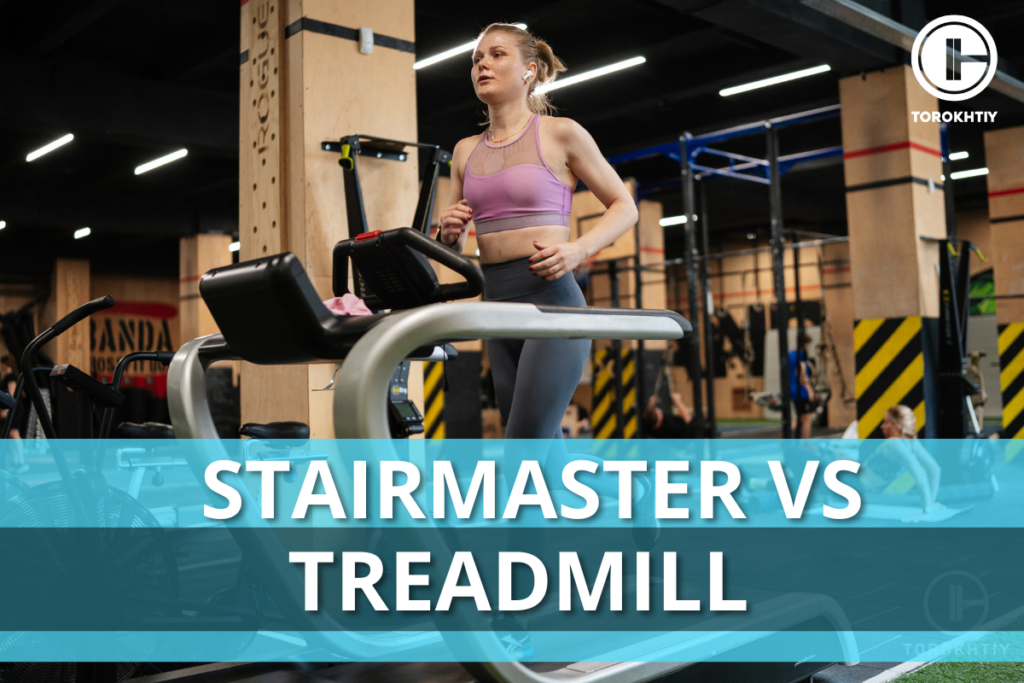
What Is A StairMaster?
StairMaster is a brand name for a type of cardio exercise machine known as a “stair climber” or “stair stepper.” As you could probably guess from the name, the purpose of the machine is to simulate climbing stairs as a means of working out. A stair climber utilizes a moving flight of stairs, while the stair stepper uses two pedals that move up and down alternately.
The most basic way to explain how it works is to imagine walking in place on a regular staircase escalator, except you’re allowed to adjust the speed and resistance level of the steps. Stair climbers are primarily designed to move downwards, which simulates climbing up the stairs, though there are models that can also move upwards to simulate downward climbing.
StairMasters are quite popular and most well-equipped gyms and fitness centers have them. There are also versions available for home use, which are typically more compact to save space. They’re quite popular due to offering a low-impact cardiovascular workout while providing high engagement to your lower body and core.
Additionally, the intensity of the workout can be adjusted by changing the speed and resistance settings on the machine, allowing athletes of varying fitness levels and workout goals to use them.
What Is A Treadmill?
Treadmills are arguably the most recognizable and commonly used cardio exercise machine. The main purpose of a treadmill is to simulate walking, jogging, or running indoors. They’re widely used in gyms and fitness centers, but there are also plenty of home-oriented treadmills that tend to be more compact and most importantly quieter.
A typical motorized treadmill is highly adjustable. Using the built-in control panel, athletes are not only able to track their progress but also change the speed, incline, resistance, and other settings.
With these settings, they can provide users with a wide range of controlled and convenient cardio workouts without having to go outside or worry about weather conditions.
Treadmills are quite popular because they’re as straightforward and intuitive as machines go. In essence, you simply step onto them and walk, jog, run, etc. and you’re working out. Many treadmills also offer built-in workout programs or the ability to set your own, allowing for a diverse and engaging workout experience.
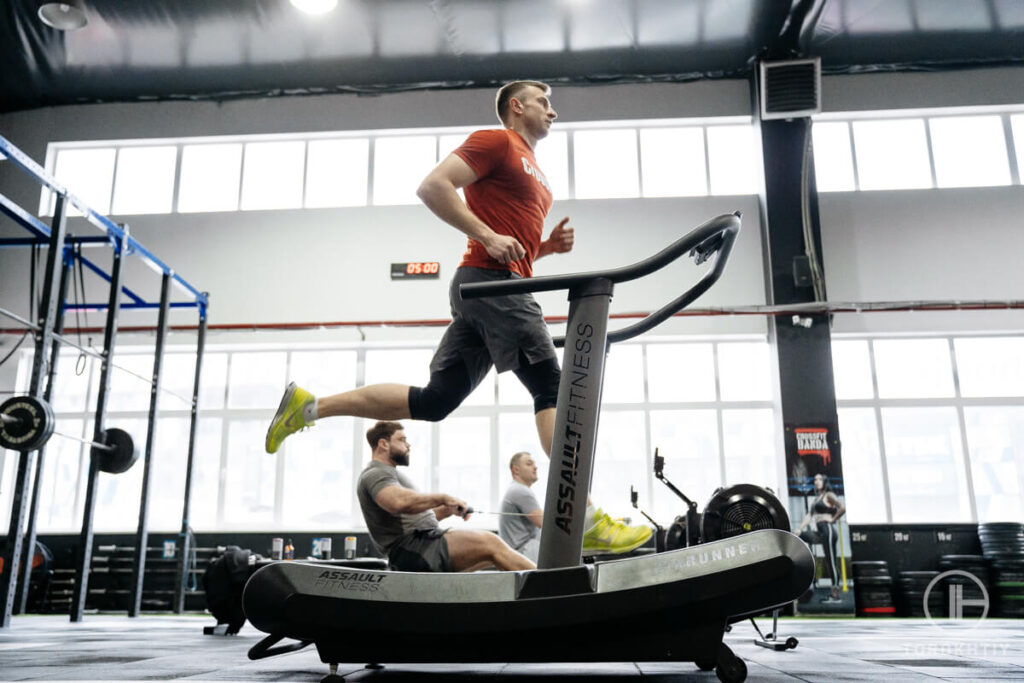
Stairmaster VS Treadmill
So, is the StairMaster or treadmill better? By comparing the two, we can see there is plenty of overlap in workout and health benefits. However, exercise approach, variety, and difficulty can be much different depending on the settings you choose. Here’s a quick overview in table form:
| Criterias | StairMaster | Treadmill |
|---|---|---|
| Best For | Muscle development | Custom cardio workouts |
| Movement Pattern | Up and down climbing | Walking/Jogging/Running |
| Range Of Motion | Lower | Higher |
| Calorie Consumption (lower intensity) | Higher | Lower |
| Calorie Consumption (higher intensity) | Lower | Higher |
| Muscle Engagement | Higher | Lower |
| Difficulty | Higher (higher exercise impact) | Lower (range of approaches between speed and incline settings) |
1. Movement Pattern
The movement pattern and range of motion (ROM) are different between the stair climber VS treadmill. Stair climbers utilize an upward (or downward) climbing motion, which can be difficult depending on your mobility and physical health.
Additionally, the range of motion is typically shorter, as there is less distance traveled by the muscles and the upper body remains unused for the most part.
On the other hand, treadmills primarily use a natural forward-moving motion such as walking or running, making them a bit more forgiving and user-friendly. Furthermore, the range of motion can be much greater in comparison to stair climbers, particularly when jogging or running, due to near full-body activation.
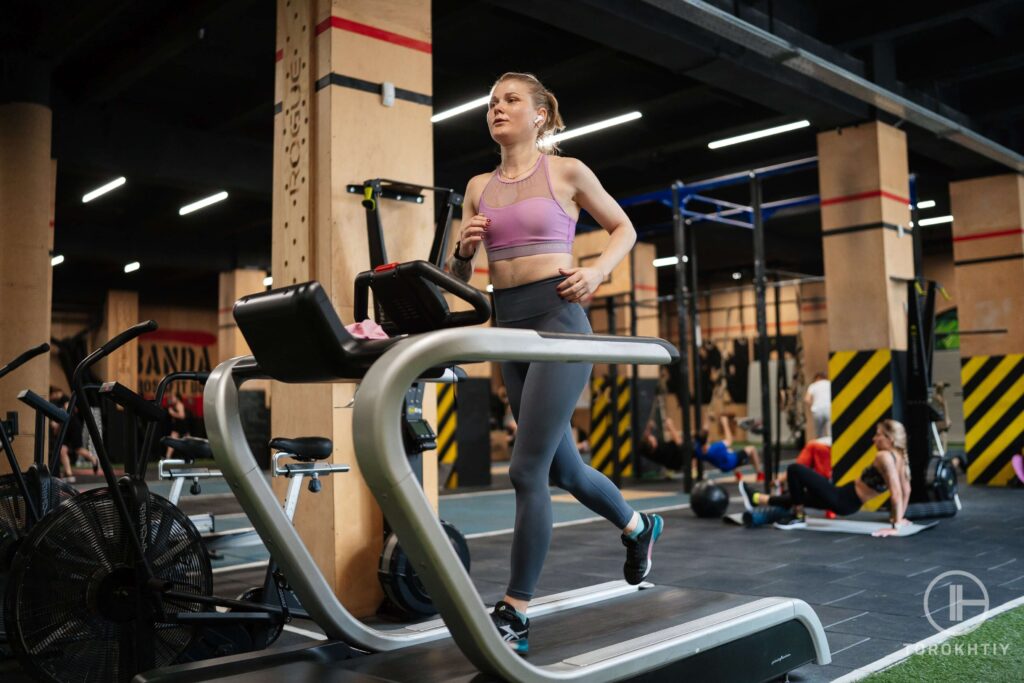
2. Muscle Engagement
There is plenty of overlap in muscle engagement between the treadmill and the stair climber. Primarily, they both work the lower body muscle groups and utilize body mechanics such as balance and stability.
However, due to the previously mentioned differing movement pattern and ROM, there are differences in muscle groups engaged and the intensity at which they work.
Treadmills primarily engage the major lower body muscles, including the quadriceps, hamstrings, glutes, and calves. In addition, they require activation of the hip abductors and adductors as well as the upper body due to arm swings necessary for balance and coordination.
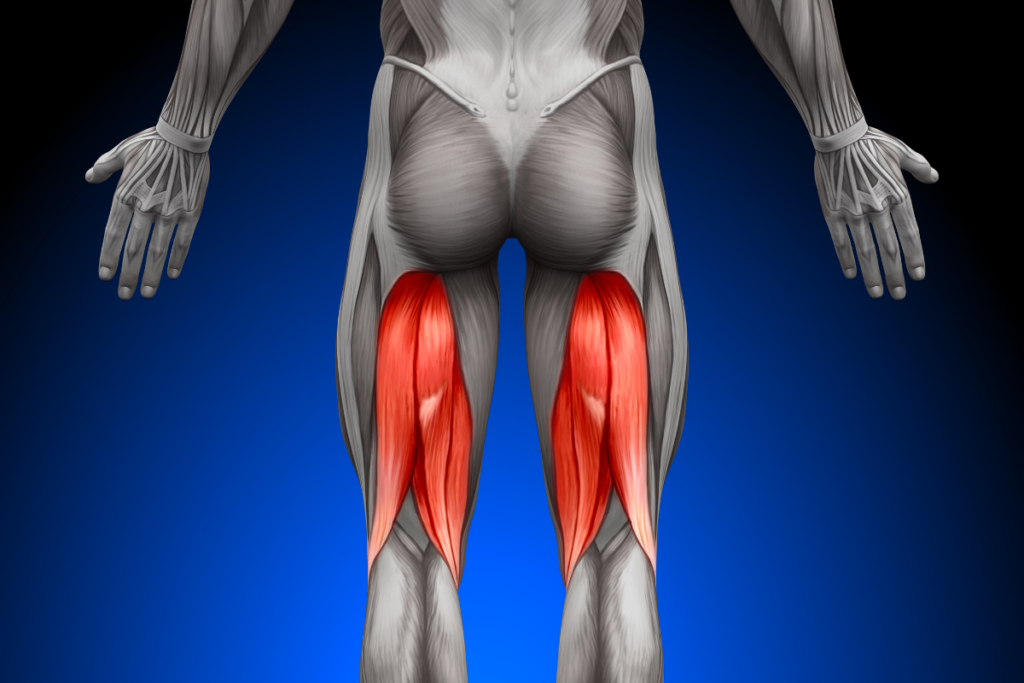
The impact on the muscles is low and better serves for muscle toning, rather than creation. That said, this can be adjusted using incline and resistance settings.
As for stair climbers, the primary targeted muscles are nearly identical, with most focus again on the quadriceps, hamstrings, glutes, and calves. However, the up-and-down climbing motion of stair climbers or steppers creates greater muscle compression.
As you step up, the muscles contract to lift your body, and as you step down, they lengthen while still under tension. This eccentric (lengthening) and concentric (shortening) muscle action increases the recruitment and activation, leading to greater and faster overall development, particularly in hypertrophy (muscle growth) and raw strength.
3. Impact And Joint Stress
On the whole, both exercise types are considered low-impact, as they use your body weight for resistance, which you should be naturally accustomed to bar outstanding circumstances.
That said, due to the constant up and down pushing against your own weight, climbing stairs has a noticeably higher impact on the joints, particularly the knee, than walking. For this reason, people with joint issues, particularly the elderly, may prefer a treadmill over a stair climber for their daily dose of cardio.
Treadmills can, however, be adjusted to provide a higher-impact workout by increasing the incline or speed.
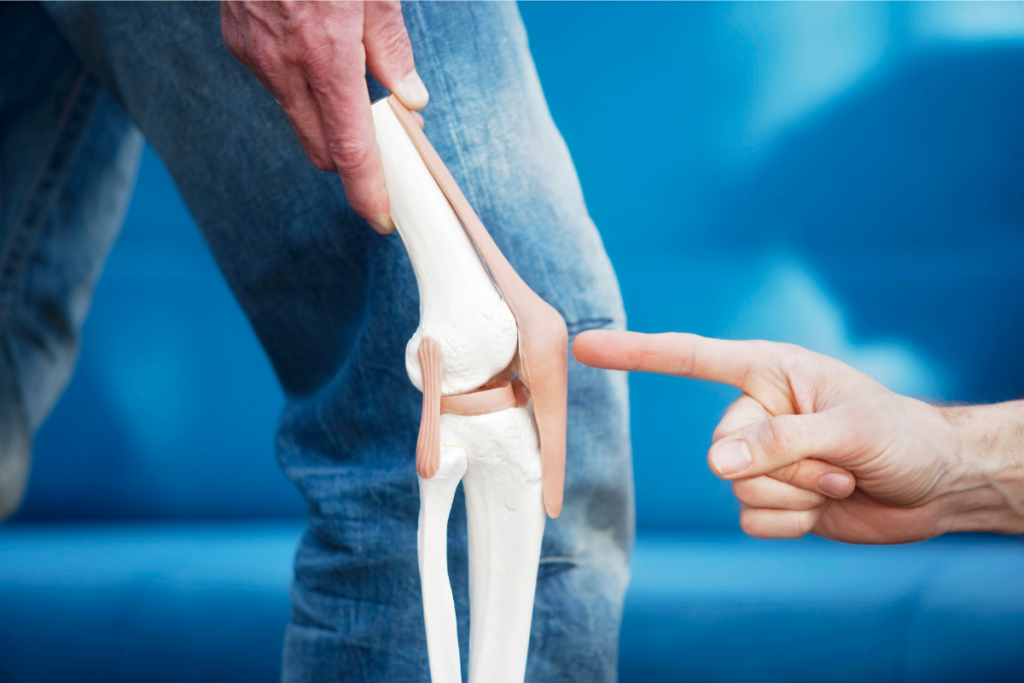
4. Weight Loss
Is StairMaster or treadmill better for weight loss? To answer this question one needs to understand what a metabolic equivalent of a task or MET is. MET is a unit used to estimate the energy expenditure or intensity of physical activities.
In simple terms, the higher the METs, the higher the energy requirement of a specific exercise, thus leading to greater weight loss.
According to the Compendium Of Physical Activities, slow-paced stair climbing has a coefficient of 4 METs, while fast stair climbing is worth 8.8. Research on the topic confirms nearly identical results.
Meanwhile, walking and running can go anywhere from 2 to 10 or more METs depending on the speed and incline. For example, running up the stairs is equal to 15 METs.
From this, we can conclude that, although treadmills are perfectly capable of aiding in weight loss, stair climbing generally has higher energy consumption rates.
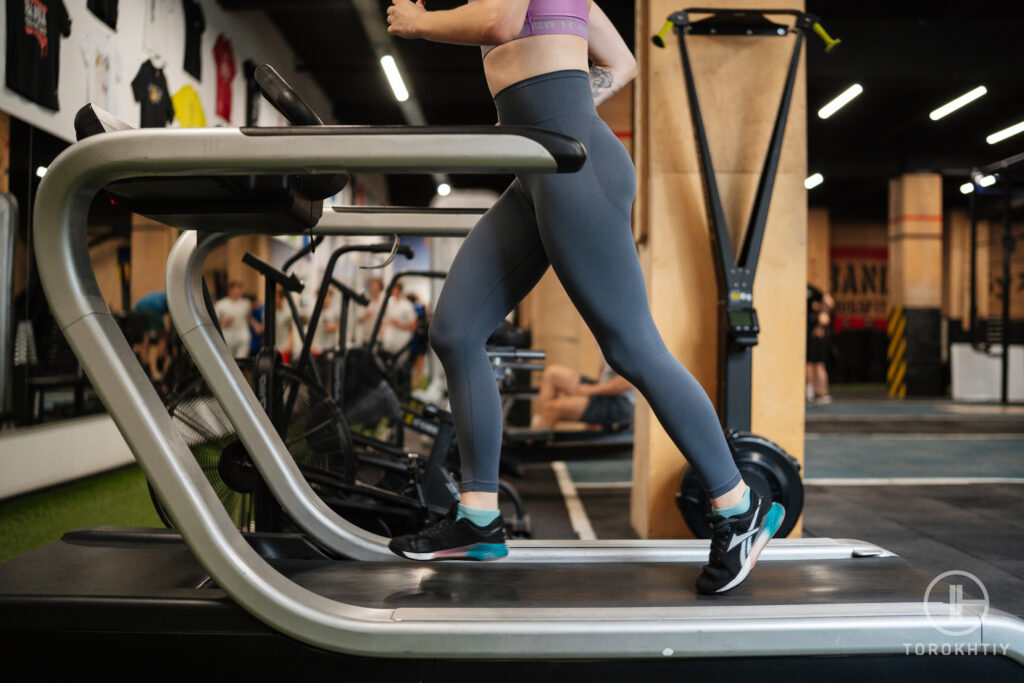
Stairmaster VS Treadmill: Summary
Looking at the treadmill vs stair stepper, each machine has positive and negative aspects you should be aware of before making a purchase decision. So, is the StairMaster better than the treadmill or vice versa? Here are brief rundowns on each machine’s pros and cons, which are especially applicable when compared to each other.
Pros:
Cons:
Pros And Cons Of Treadmills:
Pros:
Cons:
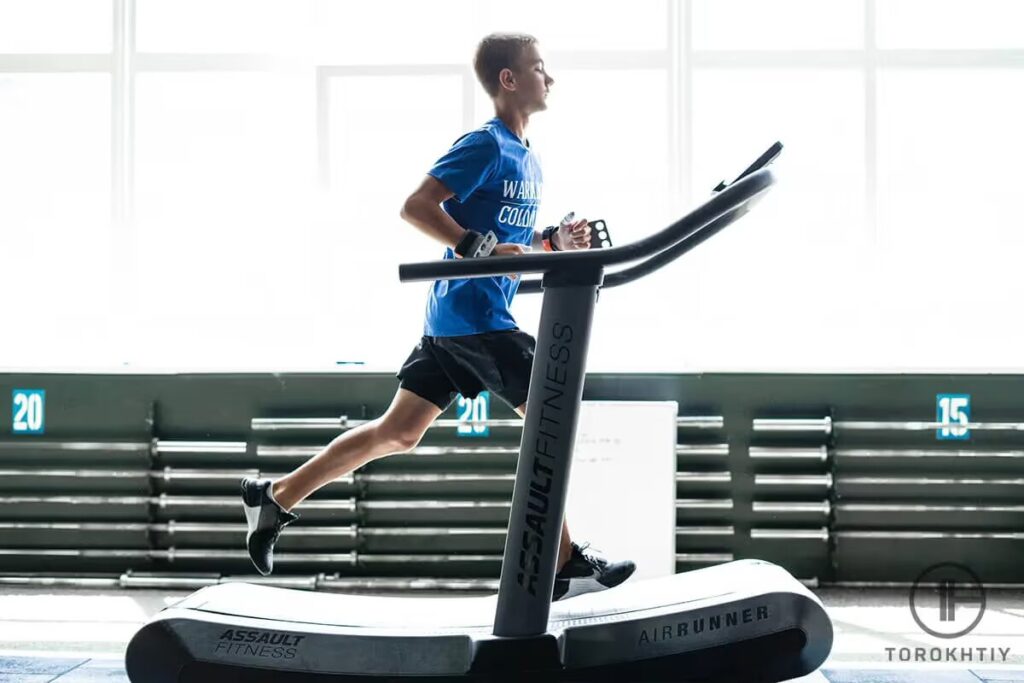
StairMaster VS Treadmill: When to Use Each?
So far, we’ve explained how each machine works, what the typical exercise experience looks like, and the benefits and drawbacks of a treadmill vs stair stepper aka climber. The next question is, when do we use each?
This choice will be most affected by your personal goals, exercise preferences, and health considerations. In short, it’s best to choose StairMaster for intense lower-body workouts and the treadmill for a range of exercises and overall cardiovascular improvement.
The StairMaster simulates climbing stairs, targeting the lower body muscles and providing a high-intensity cardiovascular workout. This type of exercise is best fit for muscle and strength development, particularly in the glutes, quadriceps, hamstrings, and calves, which are muscle groups important for your general fitness level and body aesthetic.
If you want to “feel the burn” but have limited time to exercise, climbing stairs is particularly good at calorie burn, muscle engagement, and cardiorespiratory development in shorter time frames.
Treadmills excel in providing exercise variety compared to other cardio machines, allowing for highly customizable workouts. With adjustable speed and incline settings at your fingertips, you can easily tailor your treadmill workout to suit various fitness goals, including cardiovascular conditioning, calorie burning, and endurance training.
This versatility makes treadmills an ideal choice for people with multiple fitness goals in mind.
Signature Fitness Continuous Stairclimber
This is a high-quality stair stepper that’s designed for both home and commercial use. Its durable alloy steel construction ensures longevity and it has a max weight capacity of 375 pounds. The main console has an electronic display that tracks all important metrics so you can keep an eye on your progress and stay motivated to work out.
There are 15 levels of adjustable intensity, so people of all fitness levels can use it. The continuous climbing motion gives you an effective cardio workout but it’s still gentle on your joints. It’s even suitable for people going through rehabilitation or those with sensitive joints.
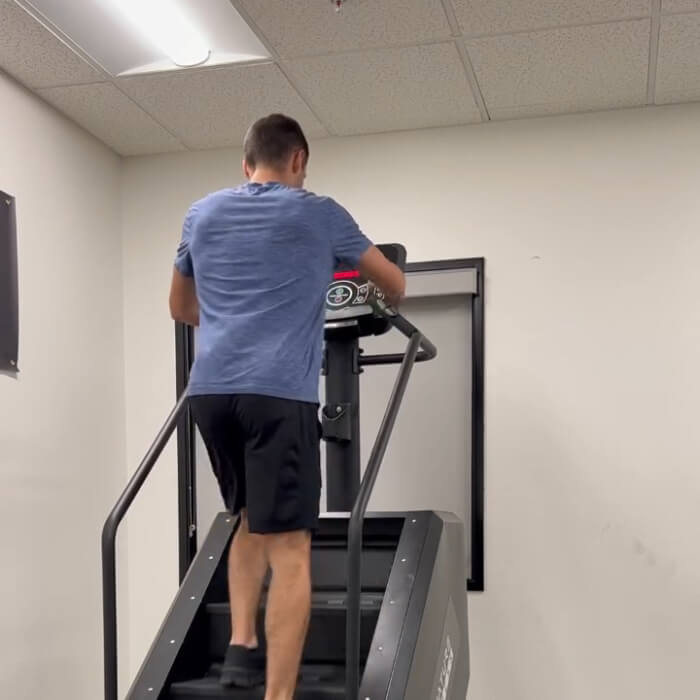
Extra features include a water bottle holder and areading rack, so it’s both convenient and comfortable. Overall, this is a reliable machine that’s ideal for improving your cardiovascular health and building strength in your lower body.
NordicTrack EXP 7i
- Product Dimensions: 70.8″ L x 34.9″ W x 59.7″ H
- Speed Range: 0-10 mph
- Max Incline: 12%
- Folding: Yes
- Weight Limit: 300 lbs
- Item Weight: 228 lbs
- Display: 7-inch Tilt HD Touchscreen
- Running Surface: 20″ W x 55″ L
- Additional Features: Bluetooth pairing for headphones and heart rate monitors, built-in speakers, smart device shelf, holding tray
- Warranty: 10-year frame, 2-year parts, 1-year labor
The EXP 7i treadmill is designed with compactness in mind, perfect for living spaces. It’s made using the SpaceSaver® design, with EasyLift™ Assist and transportation wheels allowing for folding, movement, and storage. Between the 300 lbs of weight capacity, a 12% max incline, and 10 mph top speed, it fits a variety of users and workouts.
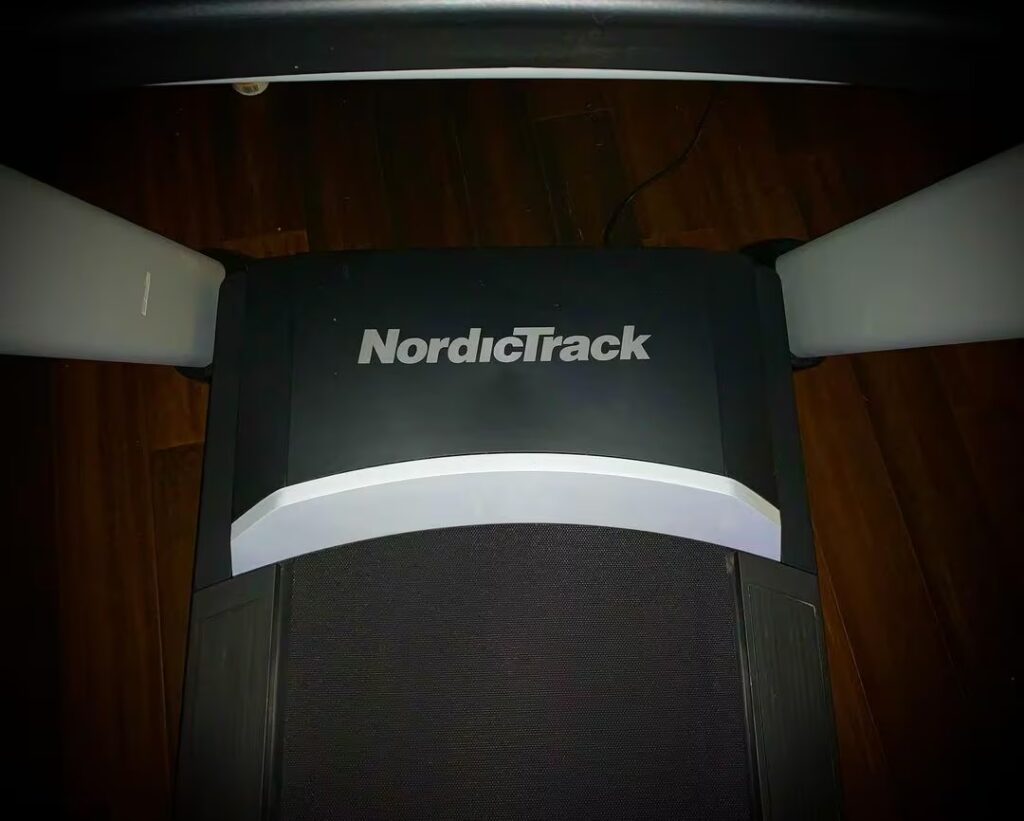
The main console boasts a 7-inch HD touchscreen display that can be tilted for optimal viewing angles. It lacks built-in training programs but it is compatible with the iFit app, allowing you to track your progress and access thousands of trainer-led workouts.
The console also includes premium audio speakers, Bluetooth pairing for headphones or heart rate trackers, a smart device shelf, and a holding tray for your essentials.
The EXP 7i is built to last, with an impressive warranty coverage, including 10 years on the frame, 2 years on parts, and 1 year on labor.
FAQ
Is StairMaster Or Treadmill Better For Weight Loss?
You can use either the StairMaster or treadmill for weight loss, but the results will depend on what type of workout, in terms of speed, resistance, and length, you perform. Stair climbing tends to outperform regular walking and jogging, but falls short of high-intensity runs, particularly if an incline is present. That said, the averages tend to even out and both machines are a good choice.
Is StairMaster Better Than Treadmill For Muscle Gain?
A StairMaster is generally better for muscle gain than treadmills, thanks to greater compression and activation. That said, some people may prefer the treadmill for its wide exercise variety.
Is StairMaster The Best Cardio?
A StairMaster machine can provide an excellent low-impact cardio workout fit for weight loss and muscle development. Having said that, is the StairMaster better than the treadmill and other cardio machines?
Research done on college athlete runners concluded that training on a stair climber vs treadmill had similar results in developing athlete aerobic capacity and lowering their total time.
Conclusion
Both the stair climber and treadmill provide a solid cardio workout fit for improving your health and fitness level.
For those looking for more intense exercise focused on muscle development and strength in their lower body, we suggest a stair climber. If you’re in the market for one for your home or garage gym, consider the Signature Fitness Continuous Stairclimber.
For those looking for general everyday cardio using a wide range of workout possibilities, a treadmill may be a better choice. In that case, we recommend the NordicTrack EXP 7i.
Have you used a treadmill or stair climber before?
Which one do you prefer and why?
Let us know by leaving a comment and make sure to follow us on social media for more valuable fitness content.
Also read:
- Treadmill Buying Guide
- Budget Treadmill vs Expensive
- Benefits of Treadmill
- Beginner Treadmill Workout
- Incline Treadmill Benefits
References:
- Tibio-femoral loading during human gait and stair climbing // NCBI: https://pubmed.ncbi.nlm.nih.gov/15099644/
- Walking // COPA: https://sites.google.com/site/compendiumofphysicalactivities/Activity-Categories/walking
- Energy cost of stair climbing and descending // NCBI: https://pubmed.ncbi.nlm.nih.gov/9309638/
- Running // COPA: https://sites.google.com/site/compendiumofphysicalactivities/Activity-Categories/running
- Training effects of short bouts of stair climbing // BMJ: https://bjsm.bmj.com/content/39/9/590
- Effects of stair-climbing vs run training on treadmill // NCBI: https://pubmed.ncbi.nlm.nih.gov/8289616/
- Photos made by Torokhtiy Media Team, photo by decade3d, Canva; photo by Jan-Otto, Canva
Why Trust Us?
With over 20 years in Olympic weightlifting, strength training, nutrition coaching, and general fitness our team does its best to provide the audience with ultimate support and meet the needs and requirements of advanced athletes and professional lifters, as well as people who strive to open new opportunities and develop their physical capabilities with us.
By trusting the recommendations of our certified experts in coaching, nutrition, and sports training programming, as well as scientific consultants, and physiotherapists, we provide you with thorough, well-considered, and scientifically proven content. All the information given in the articles concerning workout programming, separate exercises, and athletic performance, in general, is based on verified data.
The product testing process is described in more detail here.
Author: Ihor Shymechko
Pro Olympic Weightlifter, Coach
Best Results: Snatch – 208 kg,
C&J – 240 kg
Ihor has been a professional weightlifter since 1996, boasting over two decades of competition experience. His notable achievements include clinching the European Championship in 2009 and securing a silver medal in the 105kg division at the Senior World Championships in 2011. Ihor represented his country in the 2008, 2012, and 2016 Summer Olympics. After retiring from competitive weightlifting, he transitioned to coaching, leveraging his vast experience to guide athletes who now compete on both national and international stages.



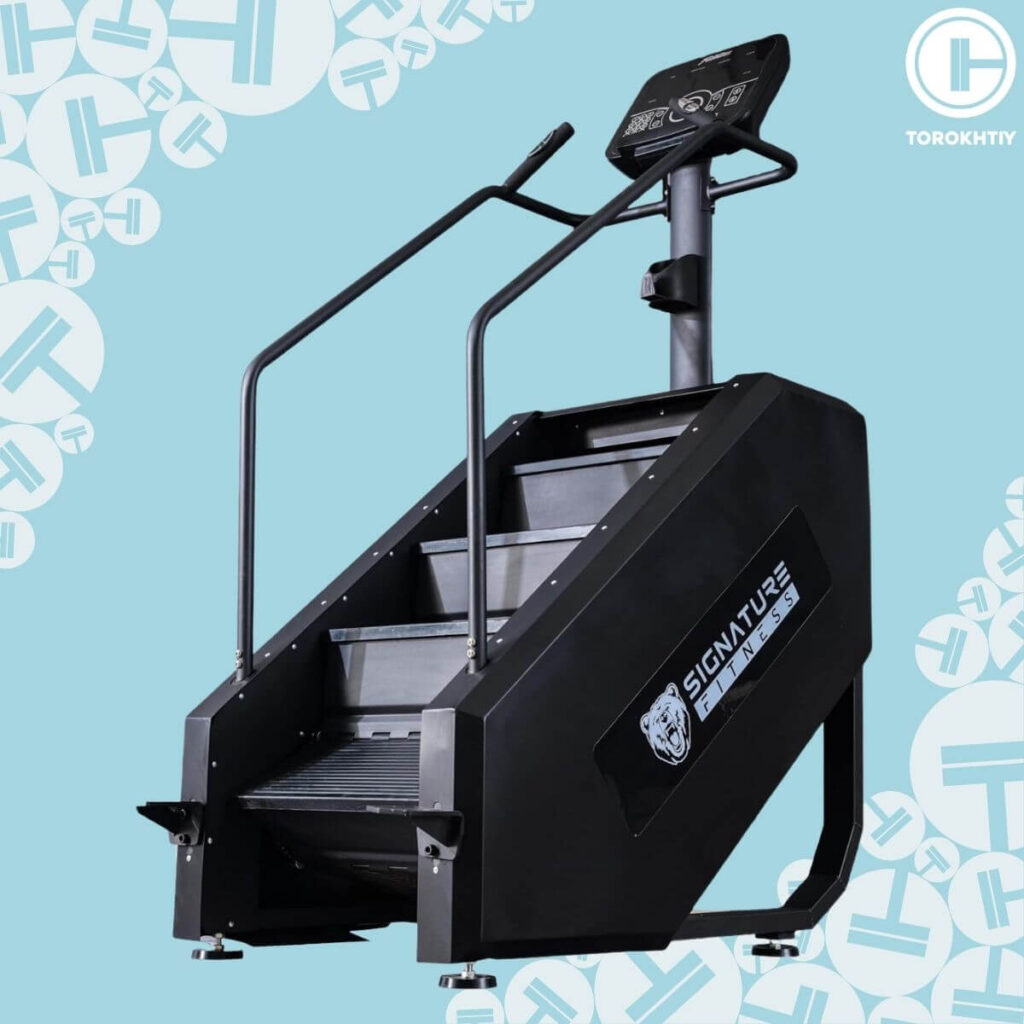
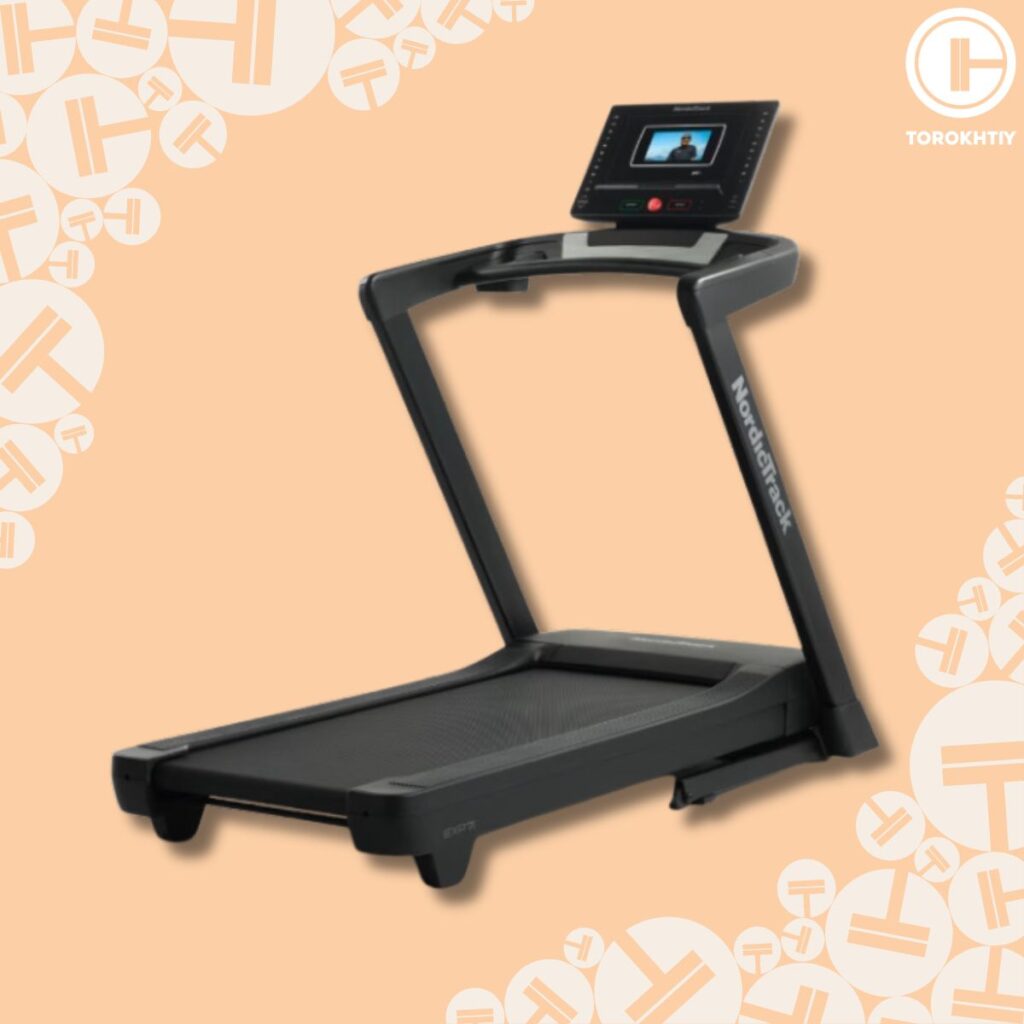
Still have questions after reading our article? Unlock your full potential by engaging with our experts and community! Don’t hesitate — leave a comment below and Ihor Shymechko will provide a personalized answer and insights to help you reach your goals.